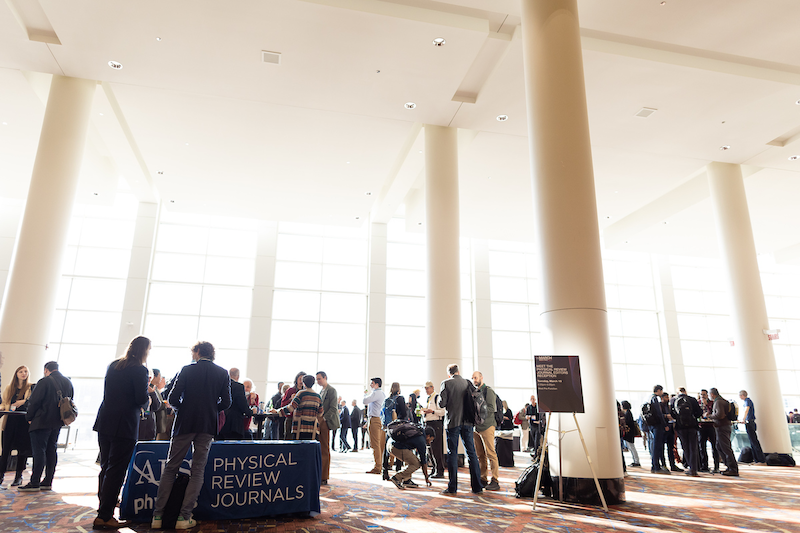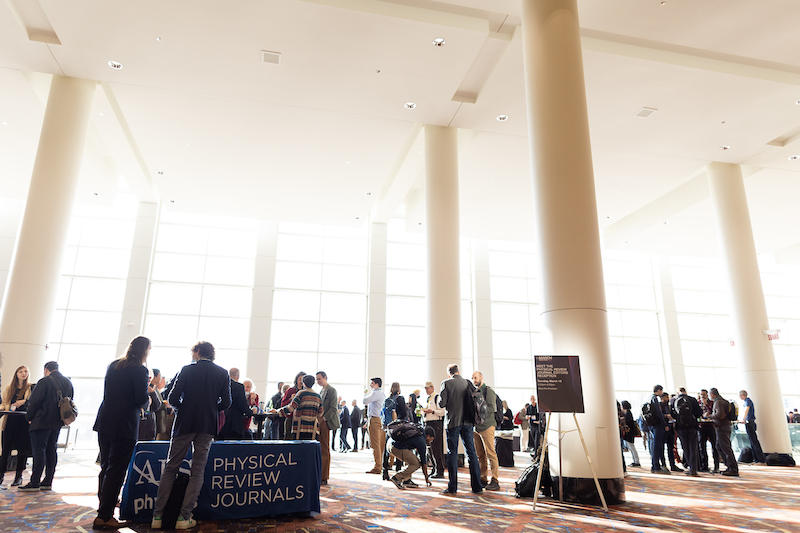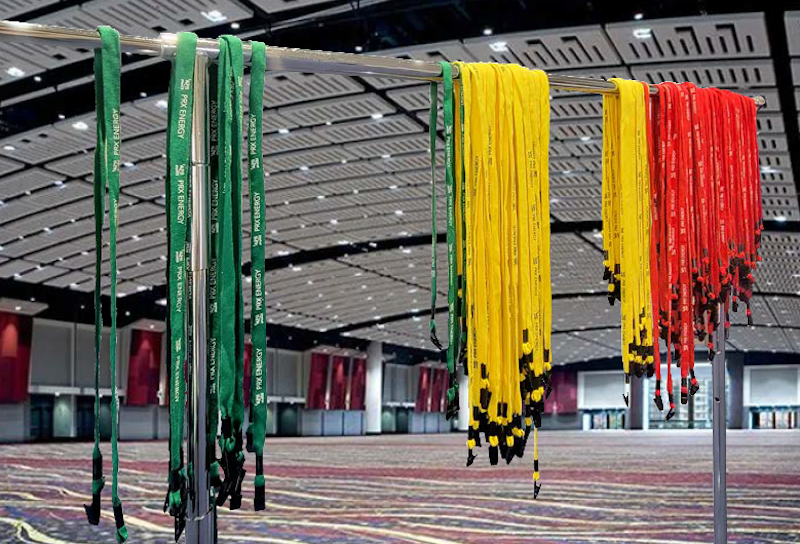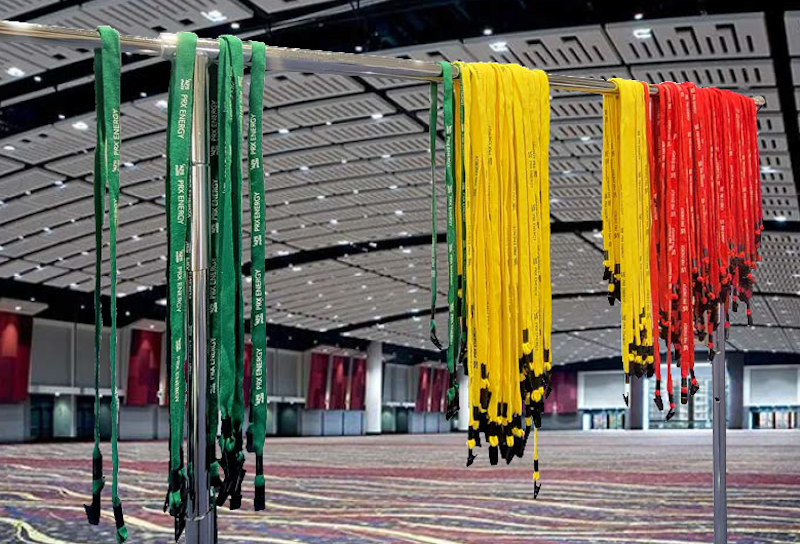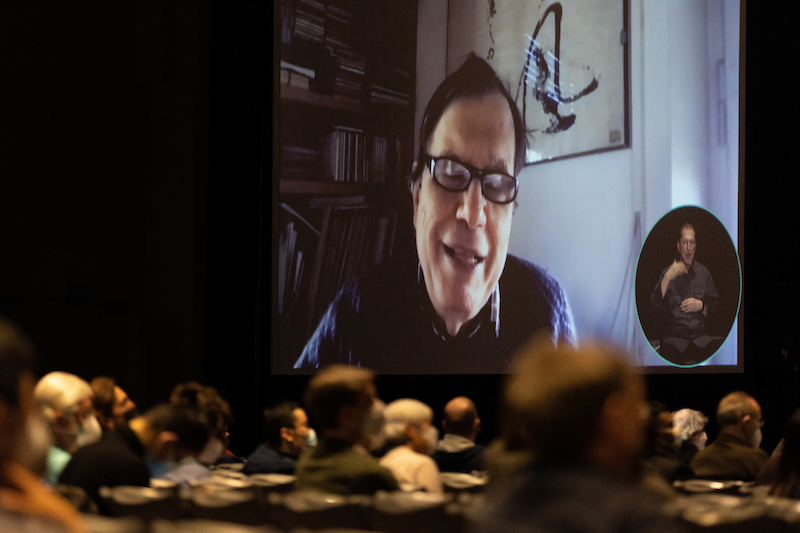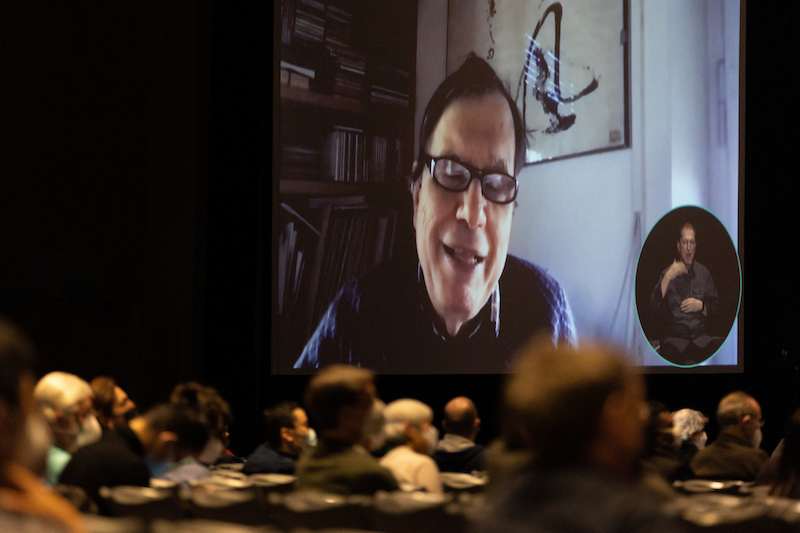Back to the March Meeting
See our in-depth coverage of the 2022 March Meeting: Physicists Discuss the War in Ukraine ; Inflating Muscles and Creeping Fingers Receive New Prize ; Immune System’s Memory in an Evolving World ; Reusing Non-Recyclable Polymers (upcoming)
Mandatory masks. Proof of vaccination. A negative COVID-19 test. Daily wellness checks. And color-coded social distancing badges. These strict protocols allowed the world’s largest physics meeting to take place in a hybrid mode this year—after being canceled in 2020 and held online in 2021. Over 13,500 physicists—a record-breaking number for the March Meeting of the American Physical Society (APS)—signed up for the 2022 event, with about 60% of them showing up in person and the rest attending through an online platform. For most of the participants, the meeting was the first in-person scientific gathering that they had attended since the start of the pandemic.
As participants picked up their badges at the registration desks, they were directed to choose a lanyard color that indicated what they’d feel comfortable with in interacting with others. Green laces invited handshakes and hugs. Yellow ones set the interaction boundary at elbow and fist bumps. And a red lanyard meant the wearer preferred to keep a safe distance. All the attendants that Physics spoke to said they felt safe and welcomed the color coding. “It’s pretty thoughtful,” said Anran Li, a graduate student at the University of Chicago. “I’d like to ‘wear yellow’ even when the virus is gone. I am just not a big hugger,” said another participant.
Green was by far the most popular color, signaling how eager physicists were to meet friends and colleagues they hadn’t seen in years. “People were friendlier than usual. I probably socialized more at this March Meeting than at any meeting I ever attended,” said Chunli Huang, a postdoc working on 2D materials at Los Alamos National Laboratory, New Mexico. Red was really hard to spot while roaming around the meeting. One red-lanyard wearer, Juan-José Liétor-Santos, an editor for the Physical Review, explained his color choice: “I want to be as safe as possible so we can soon get back to a normal life.”
While a majority of the speakers were present, the hybrid meeting meant that many talks were given remotely. “Invited” and other special sessions were broadcasted live, which allowed participants to ask questions and interact with the speakers. But in regular sessions, virtual presentations had to be offered through prerecorded videos, a limitation due to the size of the meeting. “It’s extremely challenging to have the bandwidth and infrastructure for broadcasting up to 72 simultaneous sessions,” said Hunter Clemens, the APS Director of Meetings.
For many participants, this limitation took away something from the experience. “The whole point of attending a talk is to ask questions and start a conversation,” but prerecorded sessions didn’t allow for that, said Shouvik Mukherjee, a postdoc working on cold-atom experiments at the University of Maryland. Huang, who served as a session chair, tracked the response to prerecorded talks. “Only a few of the attendants were paying attention to those talks, the others were looking at their phones or laptops,” he said. “A talk involves all senses, body language, and some improvisation. Much of this gets lost in a recorded video,” said Thomas Heinzel, a semiconductor physicist at the University of Düsseldorf, who traveled to Chicago from Germany.
But Mukherjee, Huang, and Heinzel agreed that this is the best we can do in the current public health situation. Plus, having prerecorded talks may have some benefits. “You can catch up on many more talks [than in an in-person meeting],” said Mukherjee, adding that recorded talks felt well-rehearsed and better organized. “I was surprised to discover that my advisor can be such a great speaker, and preparing a video meant that, for once, he finished his talk on time,” joked an undergraduate student.
If the color picks are anything to go by, physicists won’t be stopped from mingling and interacting, and this March Meeting will offer some lessons on how best to do it. “With some tweaks, this format is here to stay,” said Heinzel. He added that it’s important to find ways to keep meetings of this scale happening, where researchers can bump into each other and get input from fields not directly related to theirs. “It keeps you thinking for many months after you get home,” he said.
–Matteo Rini
Matteo Rini is the Editor of Physics Magazine.



